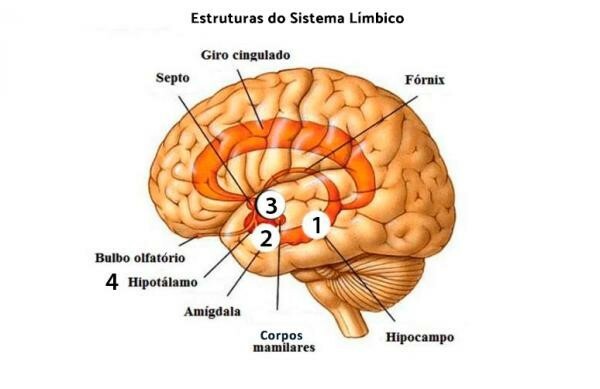Limbic System or limbic brain is located in all mammals and in the part of the brain brain between two hemispheres, that is, on the medial surface, its function in the body is to transport emotions, feelings and behavior.
Index
The vast majority of people do not know where feelings, emotions, social behavior in front of people come from, all these factors come from the limbic system, this system works the issues related to the relationship between society, past and present memories, dreams, lifelong learning, all these issues have the system as their main unit. limbic.
It is a great instrument, its function is challenging or even impossible to live together in society and add good feelings to living in community, in groups. This system is located in the center of the brain, and the core, the limbic system is a system, let's say that already old, very old, it was born more than 200 million years ago with the first birth of a mammal, that is, a long time ago, in addition to it, there is the hypothalamus and area prefrontal, also formed to enable the processes of emotions, the three are part of the encephalon (internal area of the brain), a set of structures.
See too:
For a better understanding of how the entire limbic system process works, it is important to understand the structures that make it up:
OLFACTORY BULB: It is a kind of a nerve that transmits the smell that is felt through our nose, this system does not go through the thalamus, it goes straight to the brain, through this system we have the ability to remember moments through the sense of smell, such as “that smell of childhood”, “grandma's food smell” is a system linked to emotion, as it generates happy and pleasant, that is, it helps to capture smells, aromas, in addition to enabling memories of the past, it helps, through the sense of smell, register some dangerous situation, such as smoke from fire and even decision making, identifying foods that can be thrown away, which foods we prefer, this structure is extremely charming, it is not?
cerebral amygdala: It is located at the tip of the brain, that is, in the temporal lobe region of the brain, they are part of the somatic markers, that is, there is a tension in the middle, whether it is negative or positive, activating the amygdala, it has a gray substance and can measure up to 3 centimeters in diameter, portraying emotions such as anger, fear, anxiety, some people do not have this amygdala function, that is, damaged amygdala, they cannot distinguish stressful situations in the day to morning.
Hippocampus: Responsible for every feeling of memory, be it short, medium to long term, it is a great store of memories, its shape is similar to a seahorse, they are located in the wolves brain temporal, if the person suffers any damage in that part of the brain, they no longer have the ability to create new memories, that is, it is like a pen drive without files, the memory is not stored, making the person feel lost at all times, only old memories remain stored, this happens due to lack of oxygen in the brain, infections, leading to amnesia, memory loss, can be related to schizophrenia disease, limbic encephalopathy, psychomotor epilepsy, and ADHD (attention deficit disorder) and can also occur in the function of tonsils
hypothalamus: It is located on the thalamus, triggers the main hormones for our body (adrenaline, cortisol, estrogen) and also has the function of libido, sleep control, appetite, control of body temperature, that is, it controls the main metabolic functions of our body, with such a function it doesn't reach the size of a pea, as the cerebral amygdala has cells gray,
Nipple body: The nipple body is a kind of nuclei with rounded shapes of nervous tissue, it is located on the lower surface of the brain, it has its link with the hypothalamus, regulates food reflexes in humans, such as swallowing, ie, desire to eat, taste some food Tasty.
thalamus: Neural distribution network, everything arrives at the thalamus, except the Olfactory Bulb, the thalamus receives the systems and shoots to the brain's so-called priority structures, giving a kind of feedback to the rest of the body,
Gyro cingulate: Region of dopaminergic cells cells that register reward, the cingulate gyrus is close to the thalamus, if the person stimulates this location with any medication, can cause serious problems, serious complications, such as hallucinations, emotional changes, it has substance fibers white.
The image represents each of these structures in the brain within the limbic system.

Anyway, these are the processes that involve the limbic system, can you imagine all these functions together performing the processes of our body such as sensations, desires, memories that we have in our day to morning? It's amazing how the human body is a real machine, especially the brain.
Other articles:
Subscribe to our email list and receive interesting information and updates in your email inbox
Thanks for signing up.